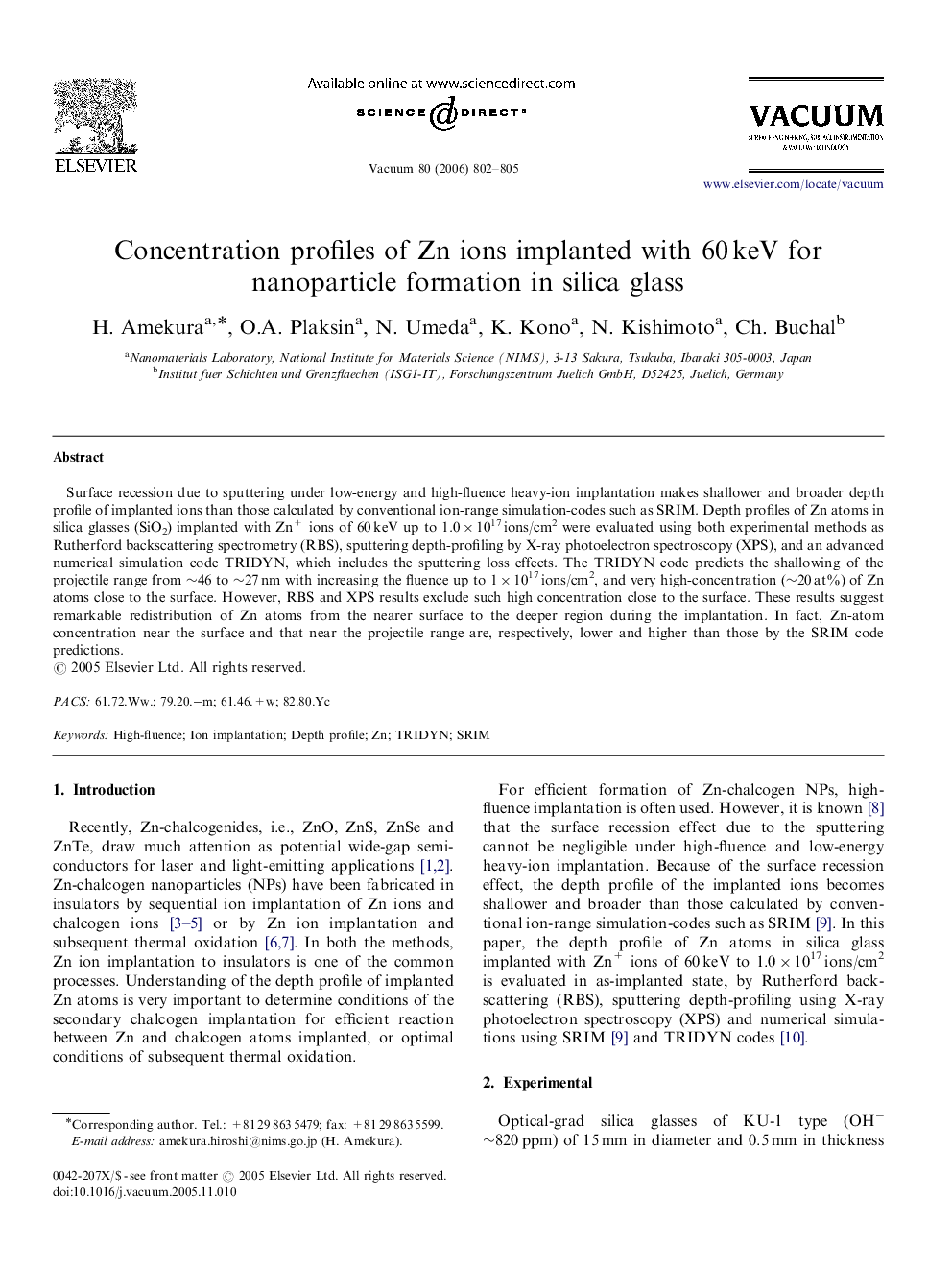| Article ID | Journal | Published Year | Pages | File Type |
|---|---|---|---|---|
| 1691761 | Vacuum | 2006 | 4 Pages |
Abstract
Surface recession due to sputtering under low-energy and high-fluence heavy-ion implantation makes shallower and broader depth profile of implanted ions than those calculated by conventional ion-range simulation-codes such as SRIM. Depth profiles of Zn atoms in silica glasses (SiO2) implanted with Zn+ ions of 60Â keV up to 1.0Ã1017Â ions/cm2 were evaluated using both experimental methods as Rutherford backscattering spectrometry (RBS), sputtering depth-profiling by X-ray photoelectron spectroscopy (XPS), and an advanced numerical simulation code TRIDYN, which includes the sputtering loss effects. The TRIDYN code predicts the shallowing of the projectile range from â¼46 to â¼27Â nm with increasing the fluence up to 1Ã1017Â ions/cm2, and very high-concentration (â¼20Â at%) of Zn atoms close to the surface. However, RBS and XPS results exclude such high concentration close to the surface. These results suggest remarkable redistribution of Zn atoms from the nearer surface to the deeper region during the implantation. In fact, Zn-atom concentration near the surface and that near the projectile range are, respectively, lower and higher than those by the SRIM code predictions.
Related Topics
Physical Sciences and Engineering
Materials Science
Surfaces, Coatings and Films
Authors
H. Amekura, O.A. Plaksin, N. Umeda, K. Kono, N. Kishimoto, Ch. Buchal,
